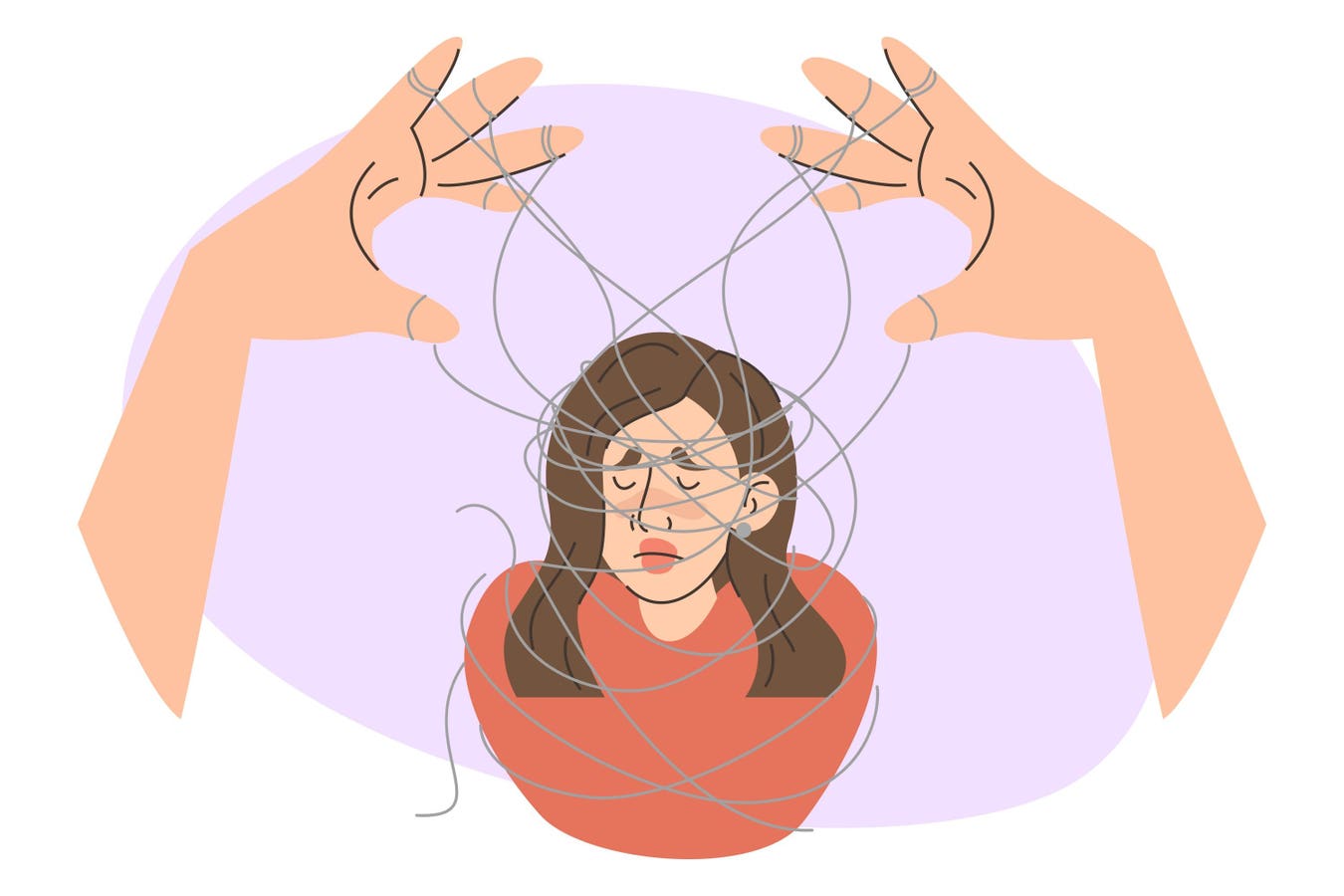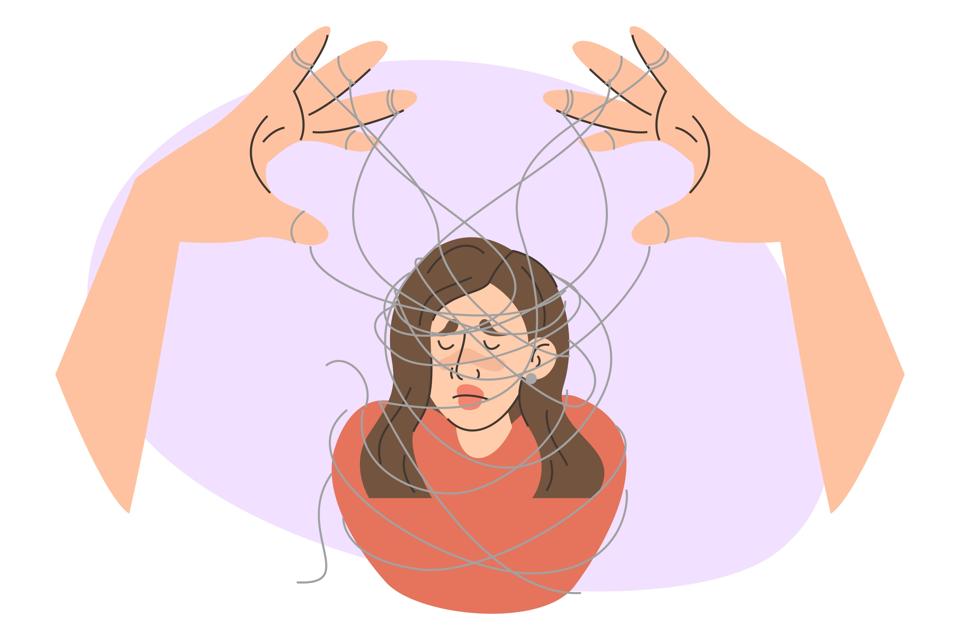Dayna Craig’s poem, ‘A Narcissist’s Prayer,’ captures the chilling reality of what it’s like to be caught in a narcissist’s path of destruction.
getty
In 2016, Northern Irishwoman Dayna EM Craig posted a poem online. In less than 50 words, she captured what that very few people have successfully been able to explain in any amount of words — that is, the experience of narcissistic abuse:
“That didn’t happen.
And if it did, it wasn’t that bad.
And if it was, that’s not a big deal.
And if it is, that’s not my fault.
And if it was, I didn’t mean it.
And if I did
You deserved it.”
The poem, aptly named A Narcissist’s Prayer, has resonated with countless individuals. Explaining the inspiration and motivation behind the poem, Craig says, “My original question with A Narcissist’s Prayer had been, ‘Am I alone?’ And of course, I’m not.”
Continuing, she explains, “Almost immediately, the response was: yes, that’s it, that’s familiar. That’s my partner, my parent, my politicians, that’s something I’m seeing when I try and redress a wrong with certain people.”
This popularity, both online and offline, comes as no surprise. Despite its deceptive simplicity, A Narcissist’s Prayer accurately speaks to the wide variety of psychological tactics narcissists deploy to disarm and control their victims.
Here’s a breakdown of each, based on psychological research.
1. Gaslighting And Reality Distortion
The first line, “That didn’t happen,” serves purely to deny the event of the narcissist’s abuse altogether. By forcing their victim to question their memories, perceptions, feelings and even their sanity, they place themselves in a position of control — of the entirety of the narrative in question, the victim, as well as the victim’s overall sense of reality.
This is a textbook example of gaslighting: a manipulation tactic used to persuade others that their convictions are false, imaginary or have no basis in reality whatsoever, despite them being true.
As 2023 research from the Journal of Family Violence explains, this form of emotional abuse is deployed most often in order to emotionally destabilize others.
As a result, and as the first line aptly captures, this forces the victim to doubt themselves. In turn, they learn to become dependent on the narcissist’s versions of events, rather than their own.
2. Minimization
When outright denial fails, narcissists may resort to minimizing the event and its impacts — as seen in the second line, “It wasn’t that bad.” While acknowledging that, indeed, they might’ve done something wrong, they nevertheless frame their behavior as trivial.
As a result, regardless of how serious the narcissist’s actions were, the victim is led to believe that they’re overreacting.
A 2019 study from Psychology, Public Policy, and Law notes that minimization is often used by convicts of serious and violent crimes. The authors note that, in over 45 hours of recordings, suspects used various minimization tactics to manipulate officers of law to believe their actions to be inconsequential. These included appeals to their own self-interest and their conscience; they also may attempt to guilt trip the officers themselves, either by crying or making further excuses.
In highly similar fashion, narcissists often say whatever they can to make their victims second-guess their own emotional responses. By minimizing their actions and their consequences, victims are led to feel ashamed for ever feeling upset in the first place.
3. Emotional Invalidation
In the third line of the poem — “It’s not a big deal” — the narcissist doubles down on their previous attempt at minimization. Only, in this line, not only is the victim’s account of the abuse being minimized, but so are their feelings about it.
This is a form of emotional invalidation. As 2018 research from Psychological Assessment explains, this tactic can be considered as any social exchange in which a person’s emotional experience is met with a response that implies their feelings are inappropriate, inaccurate, wrong or excessive.
At this point in the poem (and in their relationship), the victim has already had their memory scrutinized; now, they may begin to mistrust their own emotional compass.
In relationships with narcissists, this strategy takes on many forms. On some days, it sounds like, “You’re too sensitive.” On others, it shifts to, “You always take things the wrong way.” The impact of this repeated invalidation can wreak total emotional havoc, as, over time, they may start to truly believe that their emotional reactions are inherently flawed or burdensome. Unsurprisingly, this only enhances the narcissist’s power over them.
4. Blame-Shifting
“That’s not my fault” is a common line of defense kept in a narcissist’s repertoire — that is, blame-shifting. Here, the narcissist avoids any personal responsibility for the harm caused. If something did go wrong, they claim that it can’t have been their own doing.
According to research published in the European Journal of Personality, narcissists display incredibly stark asymmetry in how they process their own successes versus their failures. When things go well, they both happily and readily attribute it to intrinsic factors, such as their intelligence, effort, abilities or charm. But, should things go poorly, they’re quick to point fingers elsewhere: at their circumstances, other people and, in relational scenarios, at their victims.
This tactic serves to keep their self-image intact, while simultaneously eschewing the need to take any accountability. As a result, they’re able to completely rewrite the story of what happened; the victim is left to carry both the guilt and responsibility for their abuser’s harm and wrongdoing.
5. Denial Of Intent
In the next line — “And if it was, I didn’t mean it ”— the narcissist finally starts to acknowledge the fact that they’ve caused harm to their victim, but not without twisting the narrative even further. They pivot to denying having any ill intent behind their behavior, despite its obvious and objectively negative impact.
In turn, this implies that because they didn’t mean to hurt you, your pain shouldn’t count against them in any way.
In reality, however, intent is a powerful tool of social persuasion. As 2018 research from Acta Psychologica shows, people consider both intent and impact simultaneously when evaluating social engagements. That said, the authors note that intent has a highly privileged role in this process; it’s what people value most when judging an action.
Narcissists know this, either intuitively or strategically. So, they tend to downplay any harmful intent — or exaggerate their helpful intent — to reshape how they’re perceived by victims and others.
They have full awareness that outcomes alone don’t carry as much weight in social evaluation, but by controlling the narrative of intent, they’re still able protect their image.
Consequently, victims’ may become even more unsure as to whether they’re even “allowed” to feel that hurt. The narcissist’s insistence on good intentions becomes a smokescreen, which shields them wholly from accountability. All the while, the victim’s sense of justice continues to diminish.
6. Victim Blaming
The final two lines are the most overt and chilling of all. By this stage, the narcissist drops any and all pretense of empathy or confusion. Instead, they flip the entirety of the narrative on its head by, essentially, portraying the victim as the true villain of the story.
This is victim-blaming at its most extreme. A 2023 study published in the Journal of Personality and Social Psychology notes that individuals high in narcissism, Machiavellianism and sadism are more highly likely to blame victims for their own suffering. The authors note that this proclivity, in most cases, stems from a lack of empathy, and even a sense of pleasure in others’ pain.
Victim-blaming is often the narcissist’s final blow, if not their last resort. At this point, the victim’s memories, emotions and sense of justice has eroded nearly entirely. Insidiously, the narcissist’s final act is to consolidate all the abuse by convincing their victim that, ultimately, they deserved it.
You’re Not Alone
Although A Narcissist’s Prayer began as a deeply personal piece, it has since become something shared — spoken and passed between survivors and those still in the midst of it. In speaking to the impact of the poem, Craig mentioned, “It’s not a community I’d invite anyone to, but one I find comforting.”
She continued, “The response to A Narcissist’s Prayer has been humbling, and part of that is now being surrounded by other people who tell me I’m not on my own, that what I’m going through is seen and understood. That kind of connection and solidarity is powerful.”
If this poem resonates with you in any way, then know that you’re not imagining your pain. Know you’re not being too sensitive. Know you’re not alone. Know the hurt you’ve felt is real, and yours to feel.
And, as Dayna so poignantly puts it, “Every time I come across comments floating around on social media, forums online, saying that this poem has helped someone confront or even simply put a name to something they’ve suffered — I just think, ‘I wish you knew this helps me too.’”
Abuse can be indescribably isolating. But, as Dayna writes, perhaps the most powerful part of this shared recognition is that we can finally say together:
“Yes, I see this, and it’s not okay.”
Does your relationship echo the sentiments in “A Narcissist’s Prayer”? Take this science-backed test to find out if it’s time to put yourself first: Relationship Satisfaction Scale









